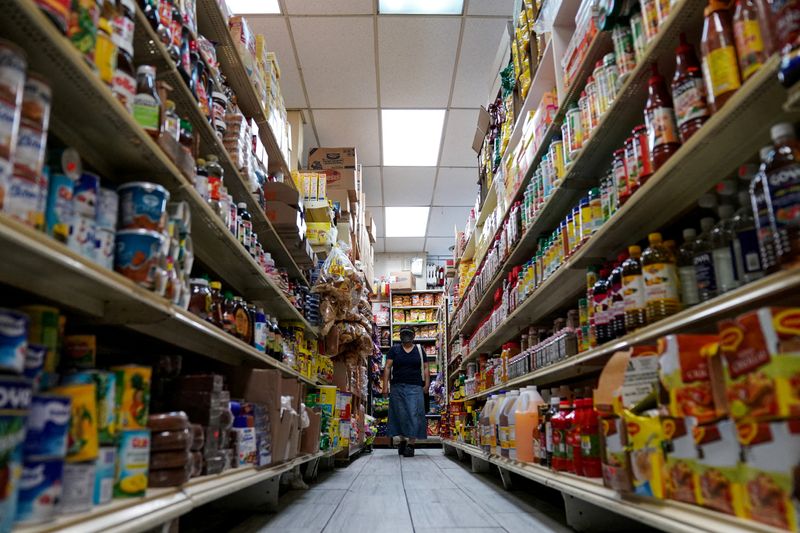WASHINGTON (Reuters) - U.S. producer prices barely rose in June and the annual increase in producer inflation was the smallest in nearly three years, more evidence that the economy had entered a disinflation phase.
The producer price index for final demand nudged up 0.1% last month, the Labor Department said on Thursday. Data for May was revised to show the PPI falling 0.4% instead of the previously reported 0.3%. In the 12 months through June, the PPI gained 0.1%. That was the smallest year-on-year rise since August 2020 and followed a 0.9% rise in May.
Economists polled by Reuters had forecast the PPI would rebound 0.2% on the month and rise 0.4% on a year-on-year basis.
The report followed on the heels of data on Wednesday showing consumer prices rose slightly in June. Inflation is easing as supply chain bottlenecks disappear and demand for goods slows in response to higher interest rates.
Last year's surge in prices is also dropping out of the calculation of annual inflation rates.
A 0.2% increase in the prices of services accounted for the rise in the monthly PPI last month. That reflected a 5.4% jump in deposit services. There were also increases in the cost of food and alcohol retailing as well as hotel and motel accommodation, insurance, hospital inpatient care and airline tickets.
But the cost of transporting freight by road fell 2.1%. Services had increased 0.2% in May.

Goods prices were unchanged in June after dropping 1.6% in May. Energy prices rebounded 0.7% while the cost of food declined for a third straight month.
Excluding the volatile food and energy components, the so-called core goods prices fell 0.2% last month after climbing 0.1% in May. The narrower measure of core PPI, which strips out food, energy and trade services components, edged up 0.1% after being unchanged in May. In the 12 months through June, the core PPI advanced 2.6% after increasing 2.8% in May.